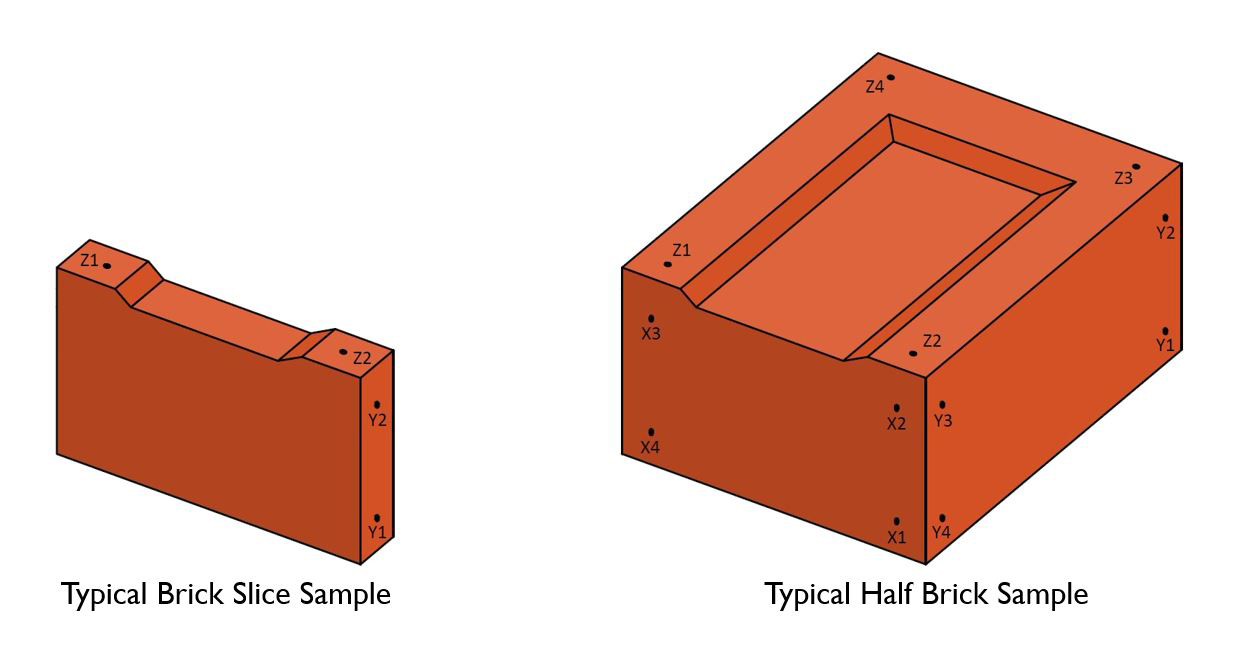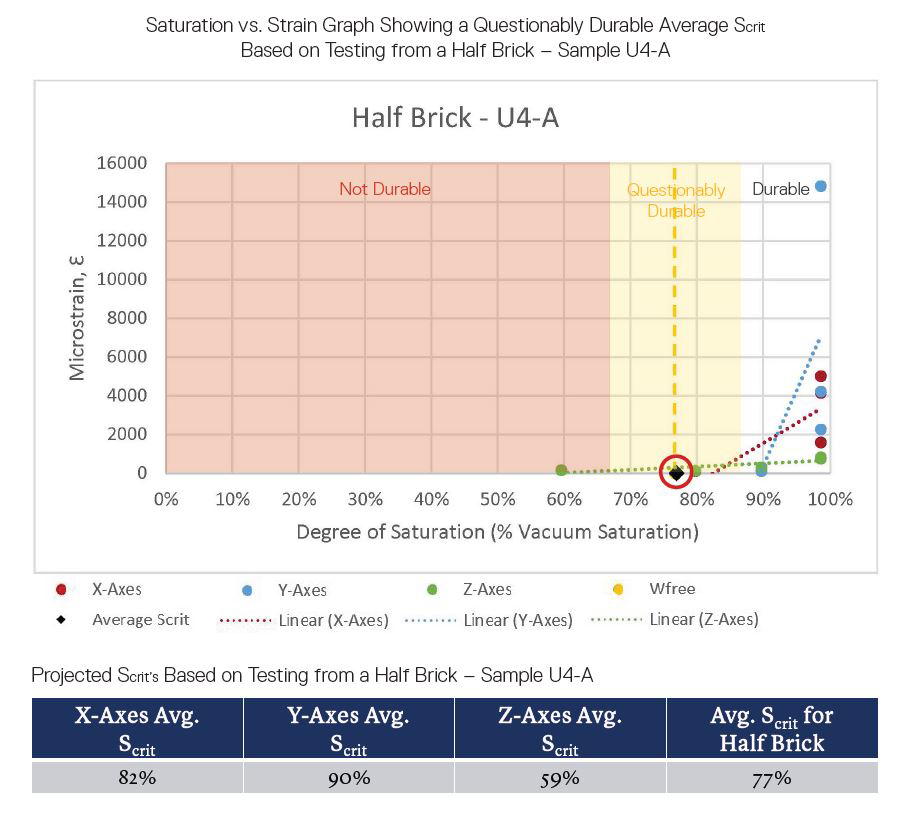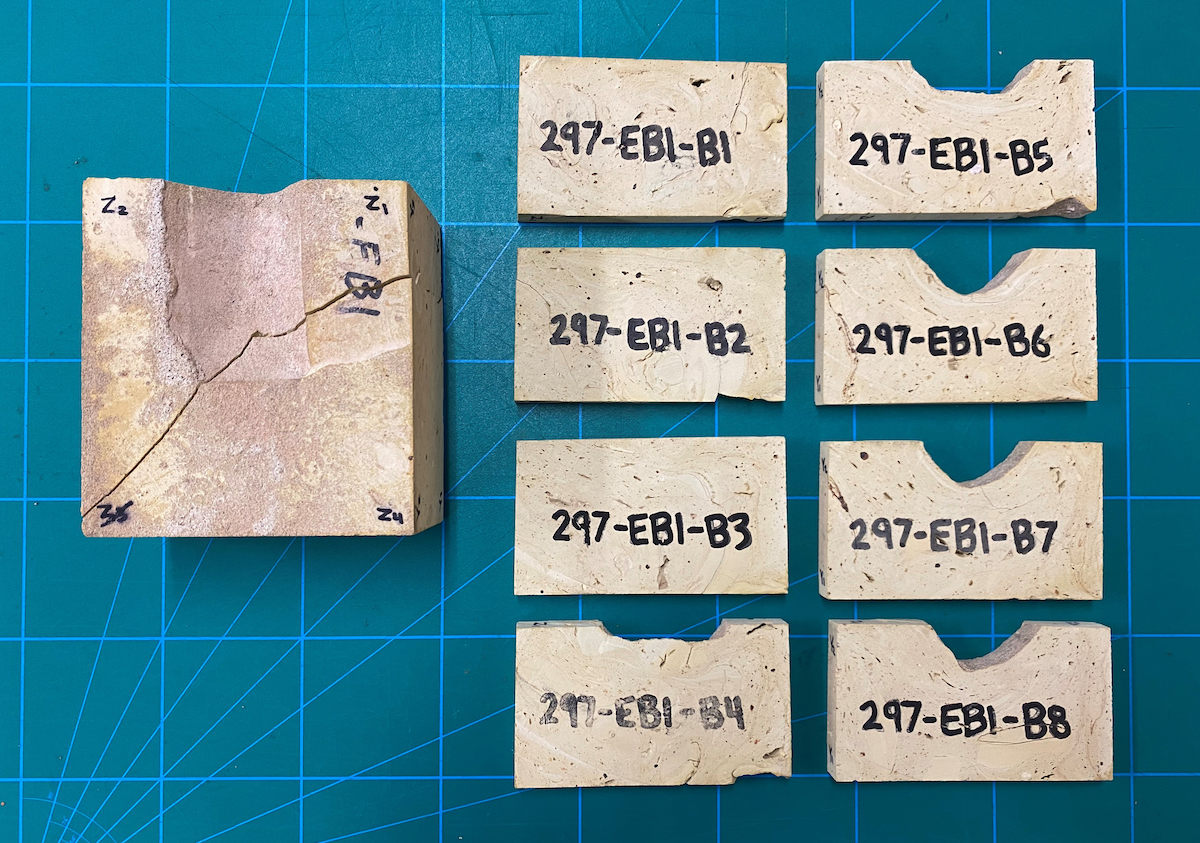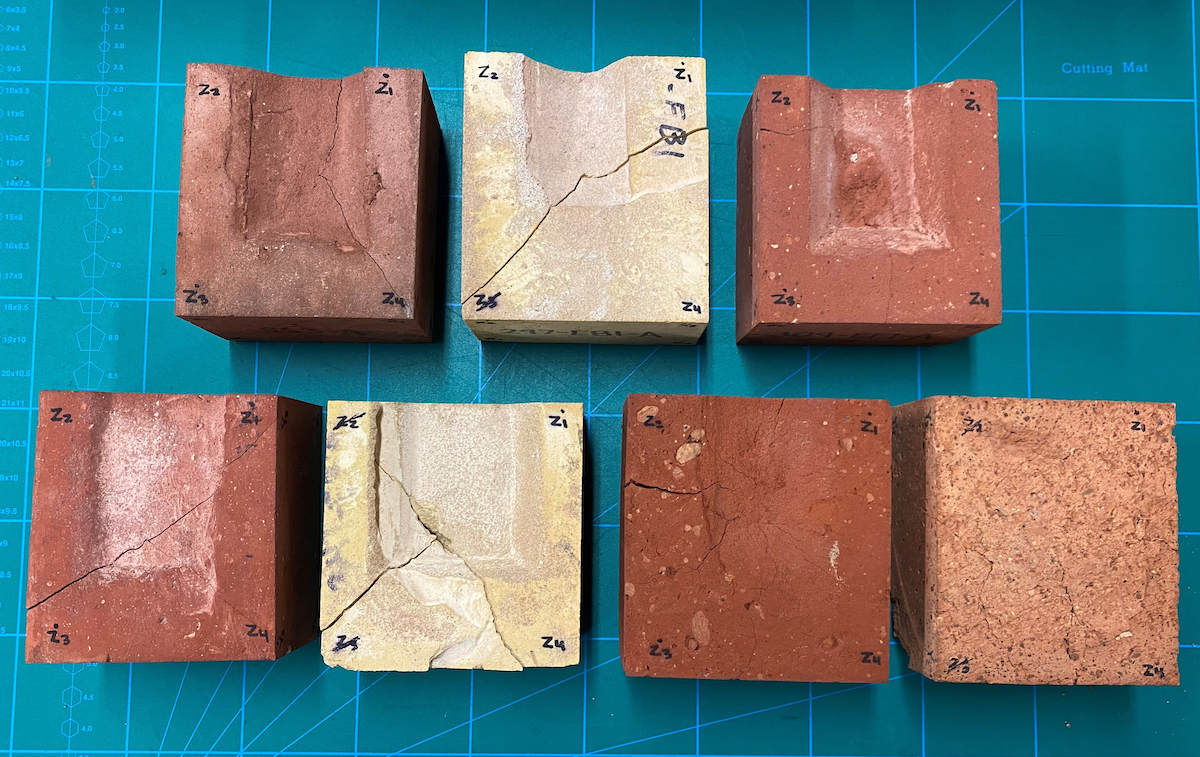BUILDING SCIENCE
Catherine Lee—Alumni Environment Award
![]()
Catherine Lee—Alumni Environment Award

About the Award
For achievement in a thesis or project on a topic related to the environment or sustainable design.
Investigating the Frost Dilatometry Methodology and Critical Degree of Saturation of Brick Slices Versus Half Brick Samples – M.A.Sc. Thesis
Abstract
This study investigates the susceptibility of clay brick masonry to freeze-thaw deterioration using the frost dilatometry methodology. Trends between the critical degree of saturation (Scrit) and varying sizes of clay bricks are examined to see if differences in material composition and pore structure impact the durability classification relative to freeze-thaw damage. Previous research has investigated the Scrit for different sized clay brick masonry, however a disconnect exists between relating the specimen size to the resulting degree of frost damage. Therefore, a gap is present in the understanding of what size sample is most representative of a bricks durability as a whole and can sufficiently predict the performance of a brick in service. For this study, 2D and 3D frost dilatometry testing was conducted on brick slices and half brick samples from 14 historical bricks. Strain was measured along the x, y and z-axes to assess the resulting effect of frost decay.
Results showed that the Scrit does appear to be impacted based on the size of the specimen being tested. Smaller sized samples (brick slices) typically resulted in a higher Scirt than larger samples (half bricks). For instance, samples U3, U4 and U5, which all originate from the same building had a projected Scrit of 88%, 89% and 88% respectively, when tested as brick slices. However, testing from the half bricks resulted in projected Scrits of 72%, 77% and 76% respectively. This shift in the projected Scrit was significant enough to alter the durability classification of each brick. Thus, it was found that out of a total 13 brick samples 11 (85%) were considered to be sufficiently durable, 2 (15%) questionably durable and none were deemed not durable, based on the data collected from testing brick slices. In comparison, to testing conducted on half bricks that found only 2 (15%) samples were considered sufficiently durable, 9 (69%) questionably durable and 2 (15%) were deemed not durable. These findings highlight the importance of standardizing a methodology for frost dilatometry testing to help ensure the durability performance of bricks are being assessed in a comparable manner.
Research Questions
For achievement in a thesis or project on a topic related to the environment or sustainable design.
Investigating the Frost Dilatometry Methodology and Critical Degree of Saturation of Brick Slices Versus Half Brick Samples – M.A.Sc. Thesis
Abstract
This study investigates the susceptibility of clay brick masonry to freeze-thaw deterioration using the frost dilatometry methodology. Trends between the critical degree of saturation (Scrit) and varying sizes of clay bricks are examined to see if differences in material composition and pore structure impact the durability classification relative to freeze-thaw damage. Previous research has investigated the Scrit for different sized clay brick masonry, however a disconnect exists between relating the specimen size to the resulting degree of frost damage. Therefore, a gap is present in the understanding of what size sample is most representative of a bricks durability as a whole and can sufficiently predict the performance of a brick in service. For this study, 2D and 3D frost dilatometry testing was conducted on brick slices and half brick samples from 14 historical bricks. Strain was measured along the x, y and z-axes to assess the resulting effect of frost decay.
Results showed that the Scrit does appear to be impacted based on the size of the specimen being tested. Smaller sized samples (brick slices) typically resulted in a higher Scirt than larger samples (half bricks). For instance, samples U3, U4 and U5, which all originate from the same building had a projected Scrit of 88%, 89% and 88% respectively, when tested as brick slices. However, testing from the half bricks resulted in projected Scrits of 72%, 77% and 76% respectively. This shift in the projected Scrit was significant enough to alter the durability classification of each brick. Thus, it was found that out of a total 13 brick samples 11 (85%) were considered to be sufficiently durable, 2 (15%) questionably durable and none were deemed not durable, based on the data collected from testing brick slices. In comparison, to testing conducted on half bricks that found only 2 (15%) samples were considered sufficiently durable, 9 (69%) questionably durable and 2 (15%) were deemed not durable. These findings highlight the importance of standardizing a methodology for frost dilatometry testing to help ensure the durability performance of bricks are being assessed in a comparable manner.
Research Questions
- How is the critical degree of saturation impacted, knowing that the material composition and pore structure varies between larger half brick samples and smaller brick samples traditionally used?
- What are significant methodological differences between conducting frost dilatometry testing on larger half brick samples versus smaller brick slices?







